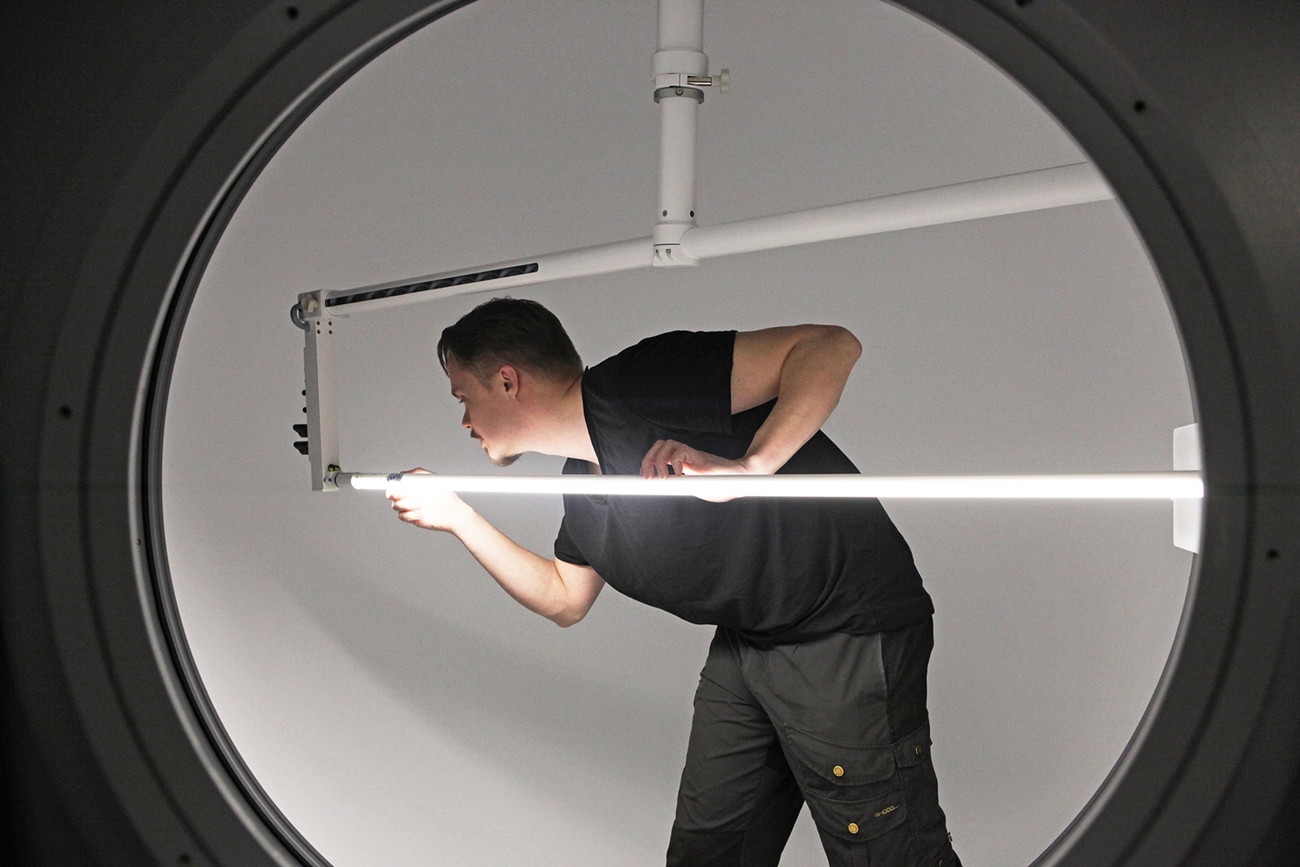Reducing energy consumption and improving health
In the Diode laser and LED system group, we develop new photonic technologies that reduce the energy consumption or improve the health for humans.

Lighting accounts for 15% of all electrical energy usage. Household lighting and commercial lighting such as public and street lighting are responsible for significant greenhouse gas emissions. With our new lighting technology, significant energy savings can be obtained in society.
Acknowledging photonics as a key enabling technology, the research activities in the Diode laser and LED system group originates around modelling and development of new light source architecture and comprises the following activities:
- Compact diode lasers based on nonlinear optical effects. These new lasers will in the future replace bulky conventional high power lasers in many applications.
- LED and diode laser architectures for energy and lighting applications. These LEDs and diode lasers are important since they reduce the energy consumption and consequently lead to lower CO2 emission than conventional lighting systems.
- Advanced diode lasers and LED based systems for biophotonic applications. These new biomedical applications are becoming important because light offers new ways to diagnose diseases and treat for human diseases.
LED technology and nanotechnology for diagnosis and treatment
Within biophotonics, we develop new photonic technologies that improve the health of humans. One example of this is the project: “Light induced brain activities for early diagnostics and treatment of Alzheimer´s and dementia”. In this project, we develop a new LED technology that modulates and activates the neuron response in different parts of the brain without hindering vision. We seek to train different parts of the brain, such as the hippocampus, through temporal light modulation, at an early stage before the onset of Alzheimer´s, for improved memory and better cognitive functions for elderly people.
Another example is our new LED technology and nanotechnology that can reduce infection in humans. There is an increasing awareness of and concern about the chronic infections in the human body. When bacterial infections occur in humans, there is a significant risk of forming highly resistant biofilms persistent to both the immune response and antibiotic treatments. Recently, we have suggested a new treatment concept for chronic infections around implants based on nanotechnology and photon activated disinfection reducing the need for antibiotic or surgical treatments.
Furthermore, in the fields of Diode lasers and LEDs we help Danish and international companies to become competitive.
Contact
Paul Michael Petersen Head of Section, Professor pape@dtu.dk